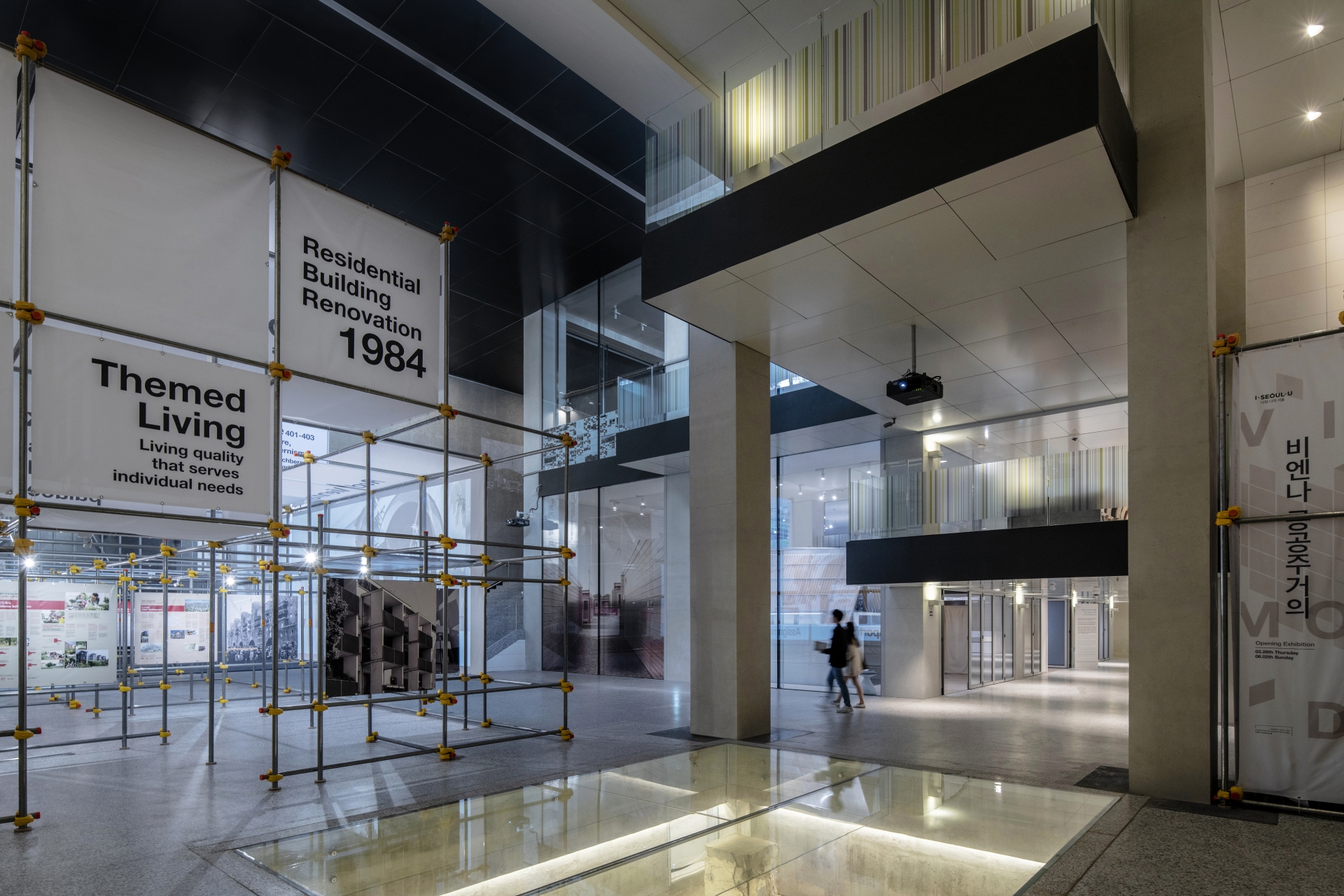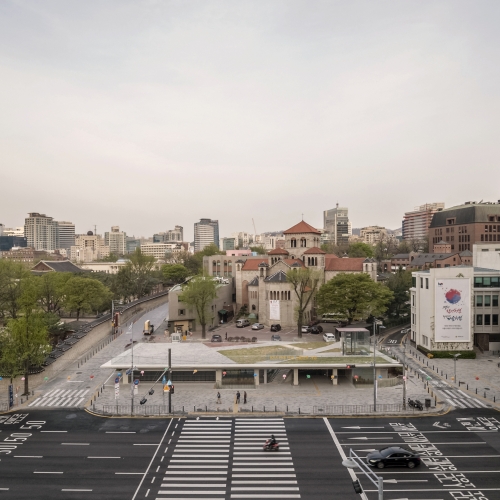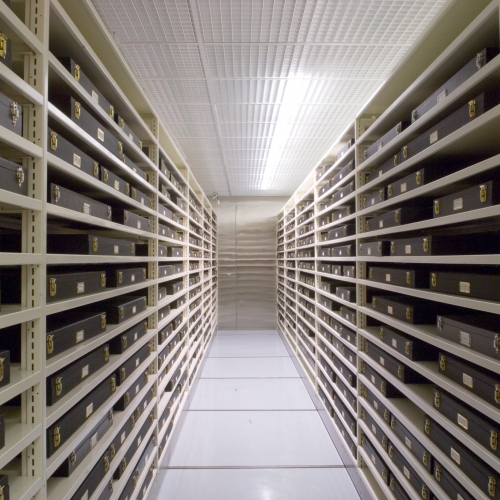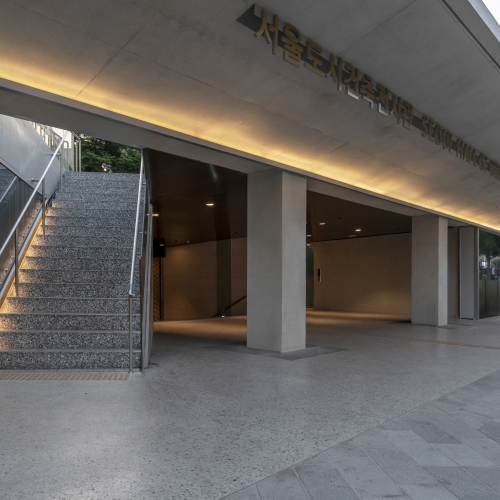[Roundtable] Kim Taehyung (director-general, Urban Space Improvement Bureau in Seoul) x Lim Yookyung (associate research fellow, Architecture & Urban Research Institute) x Jeon Bonghee (chairman of the roundtable / professor, Seoul National University) x Chung Dahyoung (curator, National Museum of Modern and Contemporary Art)
Shifts in Urban and Architectural Museums and Similar Institutions
Jeon Bonghee (Jeon): The Seoul Hall of Urbanism & Architecture opened last March. With this as momentum, I would like to discuss what directions urban and architectural museums and similar institutions should take. The National Museum of Modern and Contemporary Art and the Seoul Museum of History has performed pioneering work in taking charge of modern times and history respectively, while continuously showing interest in the urban and architectural content. The National Architecture and City Museum, which is planned to be built in Sejong City, has also been under discussion for more than a decade. Furthermore, even though it is a slightly different type, there is the Korean Territorial Development Museum run by the Ministry of Land, Infrastructure, and Transport. Please feel free to introduce what kind of jobs that similar institutions, which deal with urban and architectural contents, cultivate.
Chung Dahyoung (Chung): Since 2011, as an architectural curator was recruited at the National Museum of Modern and Contemporary Art, the Museum became more engaged with architectural research and exhibitions. A tangible achievement has been that architectural exhibitions would be held regularly, once or twice a year. Exhibitions used to be organised on an occasional basis, and many of them were even driven by the suggestions from the outside rather than from the museum. It is important to note that from 2011 onwards, the Museum began to actively produce its own content, hiring not only curators but also professional architectural archivists, and established the Art Research Center in 2013. The exhibition entitled ‘Figurative Journal: Chung Guyon Archive’ and the archive of Chong Guyon’s architectural work became great opportunities for the archiving activities of the Art Research Center. Since then, we have structured the archives of Kim Jong-sung and that of Itami Jun in conjunction with the exhibitions and continue to collect the data of not only the architects but the researchers. The archive served as an anchor to open the place for architectural discourse in art museums. Recently, as a part of the activities of applied arts (crafts, design, architecture), we are also publicising the acquisition of more collections and archives. It is similar to the research seminar ‘By-Product is my Strength’, recently held in cooperation with the Mokchon Kimjungsik Foundation. More than 200 people attended and discussed the dynamism of archive, a theme becoming more prominent for Korean architecture.
Jeon: I think I can talk about the Seoul Museum of History. As you know, the Seoul Museum of History is playing the role of the Seoul City Museum. As the director was elected twice from the architectural field, more exhibitions on architectural contents were naturally held. Also, the exhibition in the main building is important, but it is necessary to take note of the eight annexes: starting with BaekInje’s House Museum, which is the museum that takes the historic place as the subject itself, Gyeonghuigung, Gyong-Gyojang, Cheonggyecheon Museum, Hanyang City Museum, and Gongpeyong Historic Site Museum also serve as architectural museums based on the historical viewpoint. If the National Museum of Modern and Contemporary Art and the Seoul Museum of History are considered to have been charged with the very ends of modern times and history, the National Architecture and City Museum will become the one that embraces the whole.
Lim Yookyung (Lim): Although I am not directly involved with the National Architecture and City Museum, I can speak from a viewpoint in which the Architecture & Urban Research Institute (auri) has engaged since the beginning of the discussion of the construction for the National Architecture and City Museum. From 2007 to 2009, auri raised the necessity of a museum in the urban architectural field in Korea and proposed a plan for its construction, through the ‘National Agency for Administrative City (tentative name) A Study on the Planning of the Urban and Architecture Museum’. In 2015, as the National Museum Complex design passed the preliminary feasibility test, the construction plan for the Architecture and City Museum became more quantified. Later on, auri was entrusted by the Presidential Commission on Architectural Policy and to carry out research on content development and exhibition planning for the Architecture and City Museum, reifying certain struggles about content. As Professor Jeon Bonghee said, in terms of its content, the Architecture and City Museum was designed to encompass history to the modern; in terms of its field, as the name of the building signifies, the museum is planned to embrace both urban and architectural aspects. The construction is managed by the National Agency for Administrative City Construction at this stage, and the operation of the museum, later on, will be the Ministry of Land, Infrastructure, and Transport. The Ministry of Land, Infrastructure, and Transport and the National Agency for Administrative City Construction are now preparing for the actual construction of the Architecture and City Museum, while auri began conducting the research with Korea Architects Institute on the construction and exhibition actualization of the Architecture and City Museum. Throughout this research, we will refine the contents of the exhibition and the direction of its spatial planning.
Jeon: What motivated the construction of the Seoul Center for Architecture & Urbanism and the Seoul Hall of Urbanism & Architecture?
Kim Taehyung (Kim): In the case of the Seoul Center for Architecture & Urbanism, it was designed on a vacant site that was reserved during the Donuimun Museum Village project, considering the possible excavation of the Seoul Fortress Wall. It was not easy to build the first urban and architectural museum without any precedent. It was even difficult to prepare the legal grounds to build a museum. ‘There are almost a thousand agencies in the whole country, but there is no single agency with the word “architecture” in its title. Seoul city will become the first pioneering case’. This is how we encouraged the building of the Seoul Center for Architecture & Urbanism. It was extremely difficult to recruit an architecture curator in the beginning. Currently, the Center is planning to establish and run a Graduate School of Urban and Architecture Policy as a space for research and teaching policy on urban and architecture. The Seoul Hall of Urbanism & Architecture was originally planned as an annex to the Seoul Museum of History, but because it was not a traditional exhibition space due to its spatial conditions. Later on the Urban Space Improvement Bureau was put in charge of the Hall in order to use it as a supplementary facility for the Architecture Biennale. There was a complicated administrative issue concerning how the Hall covers the city or architecture, and whether it is a museum or a gallery. The reason why it was named ‘Seoul Hall of Urbanism and Architecture’ in English is that rather than being categorised as eithercity, architecture, or art, it used the new conceptual term ‘Hall’ to embrace all of them. In the end, it became the Hall of Urbanism and Architecture.
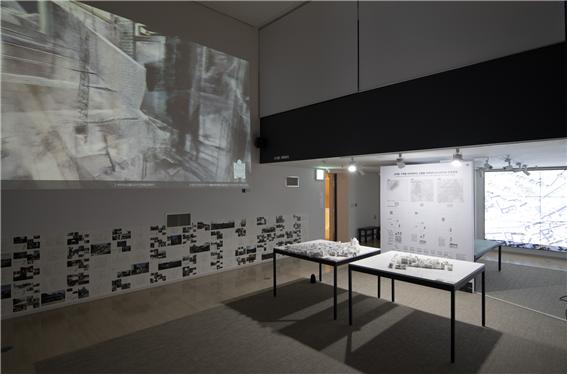
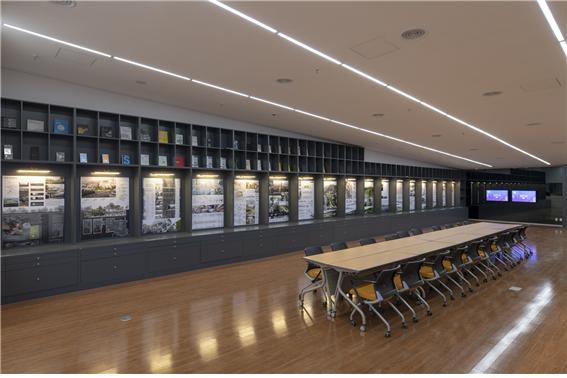
Seoul Archive, Gallery 1 of Seoul Hall of Urbanism & Architecture
The Role and Identity of Each Institution
Jeon: If so, we could move on to discuss what positions and roles the National Museum of Modern and Contemporary Art, Seoul Hall of Urbanism and Architecture, Seoul Center for Architecture & Urbanism, and National City and Architecture Center will all play. For example, it could be a matter of whether each institution focuses on permanent exhibitions or special exhibitions. It could also be about the intensity of the exhibition in tandem with the main parts such as research and archiving. Based on the nature of the balance between activities such as exhibition, research, and archives, the identity of the museum will be different.
Chung: The activities of Canadian Architecture Centre (CCA) were introduced at the symposium in the opening ceremony of the Seoul Hall of Urbanism and Architecture. As an architecture curator, CCA is also my personal role model. The organisation and programmes of CCA give a great deal of inspiration. However, in fact, the National Museum of Contemporary Art is fundamentally an art institution so it cannot become like the CCA. Also, we need rigorous foundations from which to deal with issues such as CCA’s exhibition themes that encompass the recent and contemporary environmental agendas. Since exhibitions accumulate over history rather than emerge entirely new, it is not easy to talk about contemporaries without archives and a research basis. Initially, the archiving system of the National Museum of Contemporary Art also referred to that of Getty Research Institute, but there is something that does not fit well with us: it is possible to refer to examples of respectable institutions, but eventually, the corresponding agent decides on the direction of the project and the choices followed by it.
For the National Museum of Contemporary Art, it is necessary to note that the proportion of architecture in the entire collection is less than 0.01%. Since the architectural exhibition is held once or twice a year, alongside the pavilion projects such as Young Architects Program (YAP), architecture seems like it has gained a greater stature in the museum when seen from the outside. However, considering that the assets of a museum are actually collections, there is a long way to go. In order to overcome this issue, we have made our attitude towards the necessity of archives through exhibitions publicly known. In this view, a personal exhibition is also a good method: when there is an architect’s exhibition, the following products can be brought into the museum. It has been nine years since I came to the museum, and I believe there have been some achievements made. However, in order to enrich the substance of the architectural field itself, a single museum’s efforts are not enough. For example, there should be school education, administration, and institution prepared in order to accumulate the experience of the planners such as architecture curators. Additionally, other than a museum, there should be more research and exhibition institutions that specialize in architecture where people who studied such subjects can actively collaborate. I hope that the National Architecture and City Museum or Seoul Center for Architecture & Urbanism / Seoul Hall of Urbanism and Architecture will play a role when creating such connections. Also, there is no need to repeat the formats of the existing exhibitions that museums have already shown.
Kim: I agree with that part. When we first designed the Seoul Hall of Urbanism and Architecture, we also used CCA as a role model, but now we think the direction is different. First, CCA is a private institution, so the conditions are very different to that of the Seoul Hall of Urbanism and Architecture. Rather than carrying out exhibitions as in a traditional art museum, the Hall as a public facility plans to process public projects and the Seoul city’s policy tasks and share them in various forms with citizens. So, we would like to gather scattered materials and data. As the city departments are so divided, and since the area of jurisdiction is different during the course of the project, significant projects such as Seoullo 7017, Sewoon Shopping Center, Oil Tank Culture Park, and Donuimun Museum Village are not properly collected. The primary goal of the Hall of Urbanism and Architecture is to facilitate the sharing of these materials. If the Seoul Center for Architecture & Urbanism can study the policy, connect with schools and activate education programmes, the Hall of Urbanism and Architecture will aim to share the policy tasks with the public through exhibitions and seminars.
Lim: When the Architecture & Urban Research Institute opened in 2007, the first commissioned task was the urban and architectural museum. Compared to the last decade, I feel that the standpoints of urban and architectural content and the nature of the architectural exhibition have now changed considerably. It is the era that the virtuous cycle system – in which the exhibition is produced from the archive and the new archive is accumulated as the exhibition is held – and that the importance of research and curating settle into shape. The National Architecture and City Museum was designed as an institution that can serve all the functions of an exhibition, archive, education, and research. As there are more architectural exhibitions taking place, the new themes are found, studied, and produced by the curators. I think the National Architecture and City Museum will be able to play a role as a centre for collecting those materials back together and ultimately serve as a pivotal place. I also think that the research and materials accumulated by the Architecture & Urban Research Institute should be linked to the content of the urban and architectural museum.
Finding and Accumulating Urban and Architectural Content
Jeon: After all, what matters the most is the objects chosen for acquisition and those chosen for display. In the big picture of urban and architectural issues, there should be a detailed agreement on people, objects, and actions. If I may ask a slightly narrower question, what brought you to host the last exhibition on architectural movement? It used to hold figure-oriented exhibitions in the past, but I remember that the last one was quite interesting, as an exhibition that did not focus on a single figure.
Chung: The exhibition entitled ‘Papers and Concrete: Modern Architecture in Korea 1987-1997’ that was held at the National Museum of Modern and Contemporary Art, was also an exhibition in which a single figure was not the main character of display, but one of the exhibition’s purposes was to collect the evidence of that era, that is to secure the archival material. The important roles of that exhibition were to help people realise the value of the historical materials that individuals used to have and to publicise that certain data is worth studying.
It is evident that paradoxically, our reality creates the archives by holding exhibitions. Our exhibition is not like the ones from the West which start from institutionalized archives, but discovers or creates a by-product that can only be accumulated through exhibitions. However, another problem that arises here is that those by-products are volatilized since there is no place to store them. As director Lim Yookyung said, I wish the National Architecture and City Museum could become the pivotal place for such by-products to be gathered. The justification of holding an architectural exhibition and structuring archives has gained greater social consensus than in the past, but the practical problem of how to put them into action still exists. I think the issue of how to organise the exhibition afterwards can be approached according to each planner’s competencies and strategies.
Lim: It is time to carefully think about what to collect, and what to show. Previously, several researchers and I cooperated with an architectural office and used their data to build an archive. Such work was always followed by questions about why we chose the selected target person or office. If consensus is not formed through such achievements as the research or exhibition related to it, it is difficult to validate it. Therefore, now is when the exhibition and research should be considered together.
Kim: The accumulative nature of archives has changed a great deal. Models were considered important in the past, but now in foreign countries, architectural models tend to be excluded from the group of archives due to their volume. Starting in the second half of this year, the Urban Space Improvement Bureau will eliminate the existing panels and paper submissions for the first time in their design competition, and initiate a new type of digital screening. Accordingly, there will be a server to collect digital data. With the start of this digital screening process, a new method for architects to give their presentations that does not involve any papers or panels will be introduced. When you lay aside the papers, archiving and sharing become easier. Under these new circumstances, there is a possibility that architectural exhibitions will likely be produced in a different format. It is necessary for urban and architectural content to move freely, away from traditional architecture exhibitions.
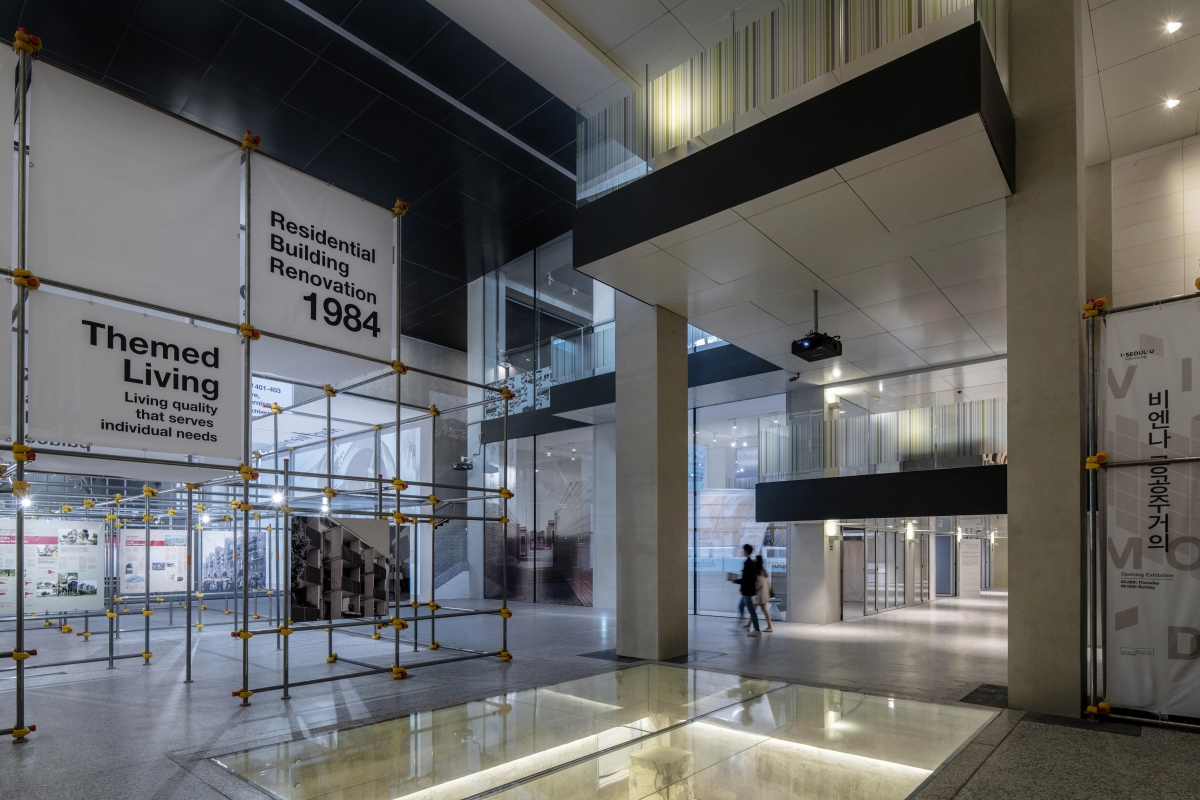
Another Issue to Resolve: How to Communicate with the Public
Jeon: Another issue is a matter of ‘how to communicate with the public’. The most familiar medium of the architectural exhibition for the general public is a model. For instance, the Korean Territorial Development Museum offers a general exhibition accessible to children. In this regard, how are attempts to communicate with the public being made?
Chung: Since the model is generally intuitive, you may think many people like it, but it is not necessarily true. For example, more people prefer videos to models lately. There is no reason to look at the model that I saw at the Korean Territorial Development Museum again. So, I believe that architecture, as a time-based spatial art, can be more challenging. Unlike with art such as sculpture, a new curatorial strategy can be devised. Also, I think that in order to communicate with the public, a detailed education programme should be expanded. The related education programmes are as important as exhibitions. Since an exhibition takes the form of mainly showing something fixed in a confined space, there is a limitation on how to set up different strategies for each visitor. However, if a post-programme that informs the public is carefully composed, there is more room for communicating. Apart from the exhibition, public-oriented architectural educations are becoming more important. In the case of architectural schools for children, we see that it is as popular as its registrations can sell out in a day. It is important to have architectural education specialists in the institution so that they can link the works exhibited inside to that which lies outside the exhibition hall.
Jeon: If so, what about the Seoul Biennale of Architecture and Urbanism?
Kim: We are also looking for an interface for citizens by working with the Biennale, such as running the architectural school for children, making textbooks, or translating Toyo Ito’s books. Based on the official record, more than 400,000 visitors visited the 2017 Seoul Biennale of Architecture and Urbanism. Some people criticised that way that the Biennale was difficult to understand due to its specialisms. Nevertheless, since this is a project operated by public funds, it is valid to provide an easy and fun exhibition that all citizens can enjoy, including children. So, the exhibitions are composed of multiple layers. There will be public programmes along with the Cities Exhibition and Thematic Exhibition. For example, there will be interactive exhibitions for children in the corridors of the Hall of Urbanism and Architecture. Digital interaction technology used to be complicated and difficult to maintain, but it has now become extremely easy. As an example, the Singapore City Gallery, which is also referred to as the representative exhibition hall of urban architecture, changed the basic direction of the exhibition by using media and digital interactive technology and shifted away from analogue methods such as models and panels. The more urban contents are involved, the higher the use of digital media.
To resolve this task differently, I personally think that urban and architecture exhibitions do not have to be planned by architecture majored curators. There are certain limitations to which inner experts hold. If there are more exhibitions of urban and architecture intertwined with a new perspective and thinking outside the box, it may lead to expanding the scope of architecture by meeting with the public.
Lim: I believe there must be a certain role expected for the National Architecture and City Museum in the field of urban architecture. It seems like they are expecting something of a longer duration and a long-term vision for a comprehensive theme that will persist steadily. However, at this stage of preparing for the construction of the National Architecture and City Museum, one of the most important tasks required is a matter of how many people will visit and how it will communicate with the public. Other than traditional urban and architectural exhibitions, involving drawings and models, new methods for exhibitions are in demand. We are thinking carefully about the exhibition methods to support citizens in their understanding of the city and architecture and to become more interested in the museum itself.
Future of the Seoul Hall of Urbanism & Architecture
Jeon: Today we talked about the issues facing the Architecture and City Museum. Lastly, I would like to hear about how the space within the Seoul Hall of Urbanism & Architecture would like to be developed. In fact, isn’t the Seoul Hall of Urbanism & Architecture a fine achievement, one that many people have long dreamt about?
Kim: I began gladly when I was preparing for the construction of the Seoul Center for Architecture & Urbanism and the Seoul Hall of Urbanism & Architecture. The whole process is very difficult. Yet it is very rewarding to have such a good space and opportunity for the first time in the architectural field. Although it is run by a specific association, I hope everyone in the architectural field pay close attention to it, and various institutions related to the city, architecture, and culture could actively use this space. We are also preparing MOU with auri for joint policy research. The Seoul Hall of Urbanism & Architecture is always open to everyone.
General citizens still think that architecture is limited, and it occupies a certain area in a certain form. There are also prejudices when working together with the city’s public officials, and even architects are often locked in the framework of their own traditional architecture. I hope this space serves as an opportunity to let architecture meet citizens and expand their working scope. I wish the architectural field actively uses this as a platform to open a new era and new architecture. The opening of the Center for Architecture & Urbanism and the Hall of Urbanism & Architecture was performed by the Seoul Urban Space Improvement Bureau, but further outcomes depend on individual interests and efforts.
Lim: I think the location of the Seoul Hall of Urbanism & Architecture between the City Hall, Deoksugung, Anglican Church is very nice and important. It would be a good place to serve as a promotion hall of Seoul City’s city and architecture policy. I believe that it will play a role as a space that can offer a comprehensive understanding of the city and architecture of Seoul.
Chung: The Seoul Center for Architecture & Urbanism and the Seoul Hall of Urbanism & Architecture: it is such a miracle that the two institutions with the name of architecture are built. Yet surprisingly, there is not much interest in the architectural field. It is essential to develop a proper device to turn and bring about more attention, but it is difficult to pursue it only through a specific institution. As the art theorist Simon Sheikh explains, in the article ‘Thinking Through the Exhibition, Thinking with People’, that the role of the art institution established by the national and artistic circles is ‘from assembly to assembly’. The duty of institution today is reborn as an element within the public sphere, in which we collect and revere works and materials. I think the Seoul Center for Architecture & Urbanism will serve as a public gathering place for the architectural field. It may rather be important to stress to visitors how it will not hold exhibitions in the traditional way and how it will contribute to creating a place for a voluntary assembly. That will also impact the National Architecture and City Museum.
Jeon: As the person in charge of wrapping up this discussion, I would like to give my personal impression. I hope that the Seoul Hall of Urbanism & Architecture does not turn into another institution. I believe it has a strong character as a place that is closer to a blank piece of paper and an empty dish. On the other hand, the Seoul Center for Architecture & Urbanism would serve its community well as an institution. Rather than emitting its own colour, I hope that the Seoul Hall of Urbanism & Architecture can become a place like an empty yard in which many people and institutions share in, and where diverse events can take place in a daily basis.
integrated urban planning policies and management of the Seoul Public Architect System. After studying business and architecture from Seoul National University, he did his graduate studies in architecture at the Columbia Graduate School of Arts and Sciences in the US. He was also a visiting professor at Sejong University and an adjunct professor at the Graduate School of Urban Architecture in Korea National University of Arts as an architect and a professional in urban development strategy.





